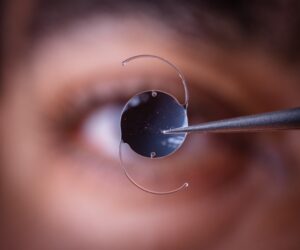
Dr. W. John Murrell, a board-certified ophthalmologist, has decades of experience performing cataract surgery and implanting IOLs with precision and care. His extensive training in ocular surgery, combined with his commitment to using proven techniques and advanced technology, ensures each patient receives high-quality, long-term results.
IOL Durability: Built to Last
Intraocular lenses are made from biocompatible materials like acrylic or silicone that are specifically designed to be permanent implants. These materials are resistant to degradation and are well tolerated by the body, meaning that once the lens is in place, it should not wear out, break down, or require routine replacement.
Unlike contact lenses or glasses, IOLs do not need to be cleaned, maintained, or changed periodically. Once healed, most people do not even notice the presence of the lens. Instead, it becomes a natural part of their vision system.
Can an IOL Ever Need to Be Replaced?
Although rare, IOL exchange may be necessary in a small number of cases. These include situations where:
- The lens power was miscalculated and vision isn’t optimized
- A newer technology lens becomes preferable for the patient’s needs
- The patient develops complications such as IOL dislocation
Even in these uncommon situations, the lens can usually be removed and replaced safely. However, almost every patient enjoys stable, long-lasting vision with his or her original IOL.
What About Vision Changes After Cataract Surgery?
While the IOL itself is permanent, some patients may notice changes in vision over time. The most common issue is posterior capsule opacification (PCO), sometimes called “secondary cataract.” This is not a problem with the IOL but with the capsule that holds it in place. Fortunately, PCO can be easily treated with a quick, painless YAG laser procedure that restores clarity without touching the IOL.
Long-Term Vision After Cataract Surgery in Amarillo
Because Dr. Murrell specializes in cataract surgery, you can feel confident that your IOL procedure will produce lasting results. Whether you choose a monofocal, multifocal, or toric IOL, you can expect stable vision improvement that endures for decades.
To learn more about your IOL options or schedule a cataract consultation in Amarillo, Texas, contact (806) 351-1177 today.
